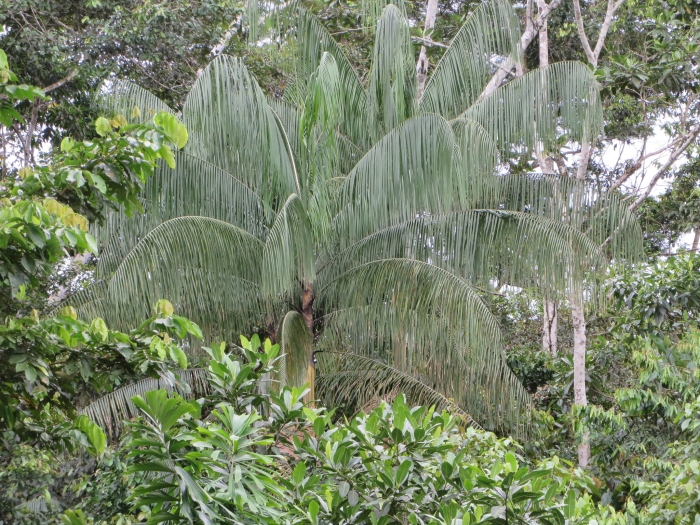Açaí Palm
(Euterpe precatoria)
Açaí Palm (Euterpe precatoria)
/
/

Jens-Christian Svenning
CC BY 4.0
Image By:
Jens-Christian Svenning
Recorded By:
Copyright:
CC BY 4.0
Copyright Notice:
Photo by: Jens-Christian Svenning | License Type: CC BY 4.0 | License URL: http://creativecommons.org/licenses/by/4.0/ | Rights Holder: Jens-Christian Svenning | Publisher: iNaturalist | Date Created: 2015-07-06T22:03:25-07:00 |

























Estimated Native Range
Summary
Euterpe precatoria, commonly known as Açaí Palm, is a tree native to the understory of tropical rainforests in Central and South America, including the Amazon basin. It thrives in areas that are often flooded, such as várzea forests and swamps, as well as near rivers. This palm exhibits a moderate growth rate, reaching heights of 45-90 feet (14-27 meters) with a slender, often multi-stemmed trunk. The Açaí Palm is renowned for its dark purple fruits, which are harvested for their nutritional value.
The Açaí Palm’s fruit is highly valued for its dietary and health benefits, leading to its cultivation in tropical regions around the world. It is also used as an ornamental plant due to its graceful form. In cultivation, it requires high humidity and consistent moisture, mimicking its native rainforest conditions. It prefers part shade to full shade and thrives in medium-draining clay or loam soils. While it is generally pest-resistant, it can be susceptible to root rot if drainage is poor. The palm’s popularity has grown due to the global demand for açaí berries, which are used in health foods and beverages.CC BY-SA 4.0
The Açaí Palm’s fruit is highly valued for its dietary and health benefits, leading to its cultivation in tropical regions around the world. It is also used as an ornamental plant due to its graceful form. In cultivation, it requires high humidity and consistent moisture, mimicking its native rainforest conditions. It prefers part shade to full shade and thrives in medium-draining clay or loam soils. While it is generally pest-resistant, it can be susceptible to root rot if drainage is poor. The palm’s popularity has grown due to the global demand for açaí berries, which are used in health foods and beverages.CC BY-SA 4.0
Plant Description
- Plant Type: Tree
- Height: 45-90 feet
- Width: 15-25 feet
- Growth Rate: Moderate
- Flower Color: Green, White
- Flowering Season: Spring, Summer
- Leaf Retention: Evergreen
Growth Requirements
- Sun: Part Shade, Full Shade
- Water: High
- Drainage: Medium
Common Uses
Edible*Disclaimer: Easyscape's listed plant edibility is for informational use. Always verify the safety and proper identification of any plant before consumption., Potted Plant
Natural Habitat
Native to the understory of tropical rainforests, várzea forests, and swamps in Central and South America
Other Names
Common Names: Acai Palm, Huasai, Asaí, Açaí, Açaí-Da-Mata, Huasi, Juçara, Forest Acai
Scientific Names: , Euterpe precatoria, Euterpe longivaginata, Euterpe stenophylla,
GBIF Accepted Name: